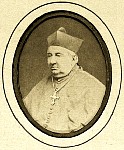

Birth. February 15, 1801, parish of S. Eufemia alla Giudecca, Venice, patriarchate of Venice. Received the sacrament of confirmation, November 21, 1808. When he was still a child, his family moved to the parish of S. Stefano; the pastor, Monsignor Angeli, directed him to the priesthood.
Education. Studied philosophy and theology at the Seminary of Venice, which had just been reopened at la Salute; in 1823, when he was still studying theology, he was asked to teach grammar to the students of the fourth year of humanities, due to the scarcity of teachers at the seminary.
Priesthood. Ordained, March 13, 1824, Venice, by Giovanni Ladislao Pyrker, patriarch of Venice. In Venice, for many years, professor at its seminary; professor at the Imperial School of Santa Caterina; pastoral work in the parish of S. Stefano; canon theologian of its cathedral chapter in 1841; prosynodal examiner; ecclesiastical censor; president of the Academy of Moral Theology S. Maurizio.
Episcopate. Elected bishop of Verona, March 15, 1852. Promoted to the metropolitan see of Udine, September 27, 1852. Consecrated, January 16, 1853, church of S. Maria in Vallicella, Rome, by Cardinal Fabio Maria Asquini, assisted by Gaetano Bedini, titular archbishop of Tebe, and by Antonio Ligi Bussi, O.F.M.Conv., vice-gerent of Rome, titular archbishop of Iconio. Assistant at the Pontifical Throne, May 23, 1854. Transferred to the patriarchate of Venice, April 7, 1862.
Cardinalate. Created cardinal priest in the consistory of March 16, 1863; received the red hat and the title of Ss. Nereo ed Achilleo, September 22, 1864. Member of the SS. CC. of the Council, Ceremonial, Index and Indulgences and Sacred Relics. Participated in the First Vatican Council, 1869-1870. Assisted in any way he could the Italian patriots incarcerated by the Austrian troops. He was a noted Orientalist and spoke nineteen Oriental and Ancient languages.
Death. April 28, 1877, Venice. Exposed in the metropolitan and patriarchal cathedral of S. Marco, and buried in the public cemetery of S. Michele, Venice. Had requested to be buried in the seminary next to his predecessors but the civil authorities denied permission. His mortal remains were transferred to the metropolitan and patriarchal cathedral of S. Marco, Venice, November 1957.
Bibliography. "Giuseppe Luigi Trevisanato" in "Sacro Collegio", Annuario Pontificio 1870. Roma : Tipografia della Reverenda Camera Apostolica, pubblicato li 2 Gennajo 1870, p. 80; Niero, Antonio. I patriarchi di Venezia. Da Lorenzo Giustiniani ai nostri gironi. Venice : Studium Cattolico Veneziano, 1961, pp. 188-194; Ritzler, Remigium, and Pirminum Sefrin. Hierarchia Catholica Medii et Recentioris Aevi. Volumen VIII (1846-1903). Patavii : Typis et Sumptibus Domus Editorialis "Il Messaggero di S. Antonio" apud Basilicam S. Antonii, 1979, pp.16, 51, 577, 584 and 587.
Webgraphy. His portrait and biography, in Italian, Dizionario Biografico dei Friulani; images and biography, in Italian, Wikipedia; brief biographical data, in Italian, third entry on page, Città di Mogliano Veneto; his portrait, ambito veneto, secolo XIX (1862-1877), regione ecclesiastica Triveneto, diocesi Venezia, Beni Ecclesiastici in web (BeWeB); his engraving, secolo XIX (1856), ambito friulano, regione ecclesiastica Triveneto, diocesi Udine, Beni Ecclesiastici in web, BeWeB; his lithograph by Giuseppe Bettini (disegnatore), ambito italiano, regione ecclesiastica Triveneto, diocesi Udine, Beni Ecclesiastici in web, BeWeB; his arms and portrait, Araldica Vaticana.
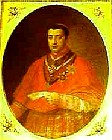
Birth. October 28, 1805, Bronte, diocese of Nicosia, Sicily, and baptized on that same day. The youngest of the ten children of Vincenzo De Luca and Francesca Saitta. Received the sacrament of confirmation, June 24, 1819. His first name is also listed as Antonio.
Education. Studied at Real Collegio Capizzi, Bronte; at the Seminary of Monreale (English, French and German); at the Seminary of Naples; studied Latin and Greek in Palermo; also studied at the University of Louvain, Belgium (doctorate honoris in theology, November 23, 1839). Doctor in theology by apostolic brief, November 28, 1845.
Early life. Went to Rome in 1829. Private secretary of Cardinal Thomas Weld, 1833-1836.
Priesthood. Ordained, February 10, 1839, by Antonio Piatti, titular patriarch of Antiochia, in his private chapel in Rome. Founder and compiler of the bi-monthly journal Annali delle scienze religiose, 1835-1845. Consultor of the S.C. of the Index, 1836, and of Propaganda Fide, 1838. Substitute professor of fisica sacra, Roman Archigymnasium, 1838-1841. Consultor of the S.C. of Propaganda Fide and director of its typography, 1838-1840. Censor of the Academy of the Catholic Religion, Rome, 1840. Rector of the Irish College, Rome, 1840. Vice-president of the Pontifical Academy of Ecclesiastical Nobles Academy, 1840-1845. In 1840, he was conferred a degree in theology ad honorem from the Catholic University of Louvain, Belgium, together with Jean-Baptiste Henri-Dominique Lacordaire OP., the renowned French preacher who re-established the Dominican Order in post-Revolutionary France. Privy chamberlain supernumerary of His Holiness, 1843.
Episcopate. Elected bishop of Aversa, November 24, 1845. Consecrated, December 8, 1845, church of SS. Trinità a Montecitorio (no longer a church, it is the actual parliament building), Rome, by Cardinal Giacomo Filippo Fransoni, assisted by Giovanni Brunelli, titular archbishop of Tessalonica, and by Giovanni Battista Rosani, titular bishop of Eritrea. Assistant at the Pontifical Throne, December 19, 1845. Promoted to the titular see of Tarso, December 22, 1853. Nuncio in Bavaria, December 24, 1853 (1). Nuncio in Austria, September 9, 1856 (2).
Cardinalate. Created cardinal priest in the consistory of March 16, 1863; the pope sent him the red biretta with an apostolic brief of March 16, 1863; the emperor imposed the red biretta in Vienna on May 15; the new cardinal left that city in September; received the red hat and the title of Ss. Quattro Coronati, October 1, 1863. Decorated with the grand cross of the Austrian Order of Sankt Stefan, 1863. Prefect of the S.C. of the Index from December 28, 1864 until July 15, 1878. Participated in the First Vatican Council, 1869-1870; president alternate. Camerlengo of the Sacred College of Cardinals, March 21, 1873 to January 16, 1874. Participated in the conclave of 1878, which elected Pope Leo XIII. Opted for the order of cardinal bishops and the suburbicarian see of Palestrina, July 15, 1878. Vice-chancellor of the Holy Roman Church and Sommista of the Apostolic Letters, July 15, 1878 until his death; received in commendam the title of S. Lorenzo in Damaso, July 15, 1878, proper of the office. Prefect of the S.C. of Studies, August 13, 1878 until his death.
Death. December 28 (or 29), 1883, of bronchitis, in his apartment at the Palace of the Chancery, Rome. Exposed in the church of S. Lorenzo in Damaso, Rome, where the funeral took place on January 3, 1884, at 11 a.m.; the funeral mass was celebrated by Giuseppe Macchi, auxiliary bishop of Palestrina. Cardinal Camillo Di Pietro, bishop of Ostia e Velletri, dean of the Sacred College, imparted the final absolution. Present were Cardinals Flavio III Chigi, Carlo Sacconi, Luigi Maria Bilio, B., Tommaso Maria Martinelli, O.E.S.A., Domenico Bartolini, Lucido Maria Parocchi, Lorenzo Nina, Tommaso Zigliara, O.P., Francesco Ricci Paracciani and Pietro Lasagni. Buried in the chapel of the archconfraternity of Prezioso Sangue in Campo Verano cemetery, Rome. He had built while he was alive a funeral monument, designed by Giuseppe Prinzi, in the church of S. Lorenzo in Damaso, at the cost of 25,000 lire, next to the the tomb of Pellegrino Rossi, a renowned economist, politician and jurist, who was minister of Justice in the government of the Papal States under Pope Pius IX.
Bibliography. "Antonino de Luca" in "Cardinali defunti", La Gerarchia Cattolica e la Famiglia Pontificia per l'anno 1903, Città del Vaticano : Tipografia poliglotta vaticana, 1903, p. 178; De Luca, Gesualdo. Elogio funebre dell'eminentissimo e reverendissimo signore Antonino Saverio De-Luca cardinale della S.R. Chiesa ... : recitato nella chiesa matrice di Bronte dal r.p. Gesualdo De-Luca dell'ordine dei rr. pp. cappuccini. Milano : Tipografia di san Giuseppe, 1884; De Marchi, Giuseppe. Le nunziature apostoliche dal 1800 al 1956. Pref. di Antonio Samoré. Roma : Edizioni di Storia e letteratura, 1957, pp. 47 and 55; LeBlanc, Jean. Dictionnaire biographique des cardinaux du XIXe siècle : contribution à l'histoire du Sacré Collège sous les pontificats de Pie VII, Léon XII, Pie VIII, Grégoire XVI, Pie IX et Léon XIII, 1800-1903. Montréal : Wilson & Lafleur, 2007. (Collection Gratianus. Série instruments de recherche), p. 202-204; "Il funerale del Emo. De Luca" in L'Osservatore Romano [electronic resource]. Città del Vaticano : L'Osservatore Romano, XXIV, n. 2 (January 3, 1884), p. 3; Ritzler, Remigium, and Pirminum Sefrin. Hierarchia Catholica Medii et Recentioris Aevi. Volumen VII (1800-1846). Patavii : Typis et Sumptibus Domus Editorialis "Il Messaggero di S. Antonio" apud Basilicam S. Antonii, 1968, p. 100; Ritzler, Remigium, and Pirminum Sefrin. Hierarchia Catholica Medii et Recentioris Aevi. Volumen VIII (1846-1903). Patavii : Typis et Sumptibus Domus Editorialis "Il Messaggero di S. Antonio" apud Basilicam S. Antonii, 1979, pp.16, 45, 47-48, 49 and 537; Squicciarini, Donato. Nunzi apostolici a Vienna. Città del Vaticano : Libreria Editrice Vaticana, 1998, pp. 215-217; Weber, Christoph. Kardinäle und Prälaten in den letzten Jahrzehnten des Kirchenstaates : Elite-Rekrutierung, Karriere-Muster u. soziale Zusammensetzung d. kurialen Führungsschicht zur Zeit Pius' IX. (1846-1878). Stuttgart : Hiersemann, 1978. (Päpste und Papsttum; Bd. 13, I-II), II, 456-457, 645, 656, 680, 688, 727, 742, 748 and 751.
Webgraphy. Biography by Giuseppe Monsagrati, in Italian, Dizionario Biografico degli Italiani - Volume 38 (1990), Treccani; portraits, funeral monument and biography, in Italian, Associazione Bronte Insieme Onlus; his episcopal lineage by Charles N. Bransom, Jr., in English, Apostolic Succession in the Roman Catholic Church; photographs and arms, Araldica Vaticana.
(1) This is according to Ritzler, Hierarchia Catholica Medii et Recentioris Aevi, VII, 100; and Squicciarini, Nunzi apostolici a Vienna, p. 215; De Marchi, Le nunziature apostoliche dal 1800 al 1956, p. 55, says that he was named on December 19, 1853.
(2) This is according to Ritzler, Hierarchia Catholica Medii et Recentioris Aevi, VII, 100; and Squicciarini, Nunzi apostolici a Vienna, p. 215; De Marchi, Le nunziature apostoliche dal 1800 al 1956, pp. 47 and 55, says that he was named on June 16, 1856.
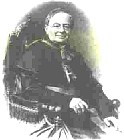
Birth. May 11, 1802, Paliano, diocese of Palestrina. Of a noble family. Son of Gonfaloniero Gregorio Bizzarri.
Education. Studied at the Seminary of Palestrina; and at the Archigymnasium of Rome, where he earned doctorates in philosophy and theology on July 12, 1824.
Priesthood. Ordained, December 18, 1824, Rome. Archivist of the Apostolic Penitentiary, 1829. Archivist and scrittore of the Apostolic Penitentiary, 1832-1836. Chamberlain d'onore in abito paonazzo, 1832. Undersecretary of the S.C. of Bishops and Regulars, 1837-1847. Qualificatore of the S.C. of the Holy Office, 1841. Referendary prelate, November 9, 1849. Canon of the patriarchal Liberian basilica. Protonotary apostolic de numero participantium, 1851-1854. Assessor of the S.C. of Bishops and Regulars, 1851. Pro-secretary of the S.C. of Bishops and Religious, 1851-1853; secretary, June 27, 1853. Consultor of the S.C. of the Holy Office, 1853. Canon of the patriarchal Vatican basilica, 1853.
Episcopate. Elected titular archbishop of Filippi, November 30, 1854. Consecrated, December 17, 1854, church of S. Girolamo degli Schiavoni, Rome, by Cardinal Gabriel della Genga Sermattei assisted by Eugéne Charles de Mazenod, O.M.I., bishop of Marseille, and by Mariano Falcinelli Antoniacci, O.S.B.Cas., bishop of Forli. Assistant at the Pontifical Throne, January 9, 1855.
Cardinalate. Created cardinal priest in the consistory of March 16, 1863; received the red hat and the title of S. Girolamo degli Schiavoni, March 19, 1863. Prefect of the S.C. of Indulgences and Relics, January 17, 1867. Worked in the preparation of the First Vatican Council, heading the Commission of Religious. Participated in the First Vatican Council, 1869-1870; president alternate. Prefect of the S.C. of Bishops and Regulars, August 31, 1872 until his death. Camerlengo of the Sacred College of Cardinals, January 16, 1874 to March 15, 1875. Opted for the title of S. Balbina, July 5, 1875.
Death. August 26, 1877, Rome. Buried in the public cemetery, Rome.
Bibliography. Ritzler, Remigium, and Pirminum Sefrin. Hierarchia Catholica Medii et Recentioris Aevi. Volumen VIII (1846-1903). Patavii : Typis et Sumptibus Domus Editorialis "Il Messaggero di S. Antonio" apud Basilicam S. Antonii, 1979, pp. 16, 46, 48 and 453; Weber, Christoph. Kardinäle und Prälaten in den letzten Jahrzehnten des Kirchenstaates : Elite-Rekrutierung, Karriere-Muster u. soziale Zusammensetzung d. kurialen Führungsschicht zur Zeit Pius' IX. (1846-1878). Stuttgart : Hiersemann, 1978. (Päpste und Papsttum; Bd. 13, I-II), II, 440-441, 653, 680, 689, 718 and 741.
Webgraphy. His engraving and biography, in Italian, Wikipedia; his photograph, engraving and arms, Araldica Vaticana; Collectanea in usum Secretariae Sacrae Congregationis Episcoporum et Regularium cura A. Bizarri Archiepiscopi Filippensis Secretarii edita. Romae ex Typographia Polyglotta S. C. de Propaganda Fide MDCCCLXXXV, HathiTrust, digitized by Google.

Birth. December 1, 1803, Cubas, diocese of Santander, Spain. Of a noble family. Son of Bernardo de la Lastra Cuero (1769-1837), a surgeon, and Brígida de la Cuesta Hontañón. He is also listed as Luis Lastra Cuesta.
Education. Initial studies at Villacarriedo near Santander; later, at the University of Valladolid, where he earned a doctorate in civil and in canon law, in 1829. Received the subdiaconate in May 1828; and the diaconate on September 20, 1828.
Priesthood. Ordained, December 1828, Valladolid. Canon doctoral of the cathedral chapter of Burgos. Canon doctoral in the cathedral chapter of Toledo. Lawyer of the Council of Castilla, 1830. Curate of the Military Orders. Canon doctoral of the cathedral chapter of Orihuela, 1831-1834. In the archdiocese of Valencia, 1834-1852, canon doctoral of its cathedral chapter; vicar capitular; provisor and vicar general, 1847-1852.
Episcopate. Elected bishop of Orense, March 18, 1852. Consecrated, Sunday, June 20, 1852, church of S. Isidro, Madrid, by Giovanni Brunelli, titular archbishop of Tessalonica, nuncio in Spain, assisted by Tomás Iglesias Bácones, patriarch of the West Indies, and by Benito Forcelledo Tuero, bishop of Astorga. Promoted to the metropolitan see of Valladolid, August 3, 1857. Knight with Grand Cross of the Royal and Distinguished Order of Carlos III. Member of the Royal Academy of History. Transferred to the metropolitan see of Sevilla, March 16, 1863. Participated in the First Vatican Council, 1869-1870.
Cardinalate. Created cardinal priest in the consistory of March 16, 1863; received the red hat, June 12, 1863; and the title of S. Pietro in Vincoli, July 12, 1867. Hermano Mayor of Hermandad los Negritos in January 1865. Senator by his own right from 1868. On September 19-27, 1868, took place the Revolution of September or Septembrina and in Sevilla were expelled the Jesuits and the Philippians, and some churches and convents were destroyed.
Death. May 5, 1876, Sevilla. Exposed in the metropolitan cathedral of Sevilla and buried in the chapel of Santa Ana o del Cristo de Maracaibo in that cathedral. The statue is the work of sculptor Ricardo Bellever in 1880.
Bibliography. Guitarte Izquierdo, Vidal. Episcopologio Español (1700-1867). Españoles obispos en España, América, Filipinas y otros países. Rome : Instituto Español de Historia Eclesiástica, 1994. (Publicaciones del Instituto Español de Historia Eclesiástica; Subsidia; 29), p. 193; Ramos, M. "Lastra y Cuesta, Luis de la." Diccionario de Historia Eclesiástica de EspañaDirigido por Quintín Aldea Vaquero, Tomás Marín Martínez, José Vives Gatell. Madrid : Instituto Enrique Flórez, Consejo Superior de Investigaciones Científicas, 1972-1975. 4 vols., and supplement, 1987, II, 1270-1271; Ritzler, Remigium, and Pirminum Sefrin. Hierarchia Catholica Medii et Recentioris Aevi. Volumen VIII (1846-1903). Patavii : Typis et Sumptibus Domus Editorialis "Il Messaggero di S. Antonio" apud Basilicam S. Antonii, 1979, pp. 16, 52, 134 and 580.
Webgraphy. Biography by Vicente Cárcel Ortí, in Spanish, Diccionario Biográfico Español, DB~e; his portrait and biography, in Spanish, Wikipedia; his portrait and biographical data, in Spanish, archidiócesis de Sevilla, 1863, sixth on page; biography, in Spanish, Hermandad los Negritos; his engraving, Grabado de la Ilustración Española y Americana, Año 1876, todocoleccion.net; his portrait, Alamy Ltd.; his portrait, Instituto Andaluz del Patrimonio Histórico, 2004; his engraving, Ilustracion Española y Americana 1876, todocoleccion.nt; his tomb, Antigua Postal con Publicidad del Hotel Casino Granada, todocleccion.net; Retratos de obispos de Sevilla, Ceremonia y rúbrica de la Iglesia española, mforo.com; his tomb, El mundo de Juan María: Viajes y Fotografías; Carta pastoral de despedida que el cardenal Luis de la Lastra y Cuesta, dirige al clero al clero y pueblo de su diócesis de Valladolid. Madrid : Imprenta y Librería de D. Eusebio Aguado. - Pontejos, 8. 1863.
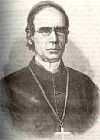
Birth. August 1, 1812, Champforgeuil, diocese of Autun, France. Third child of Laurent Pitra (1765-1835), who was born in Lyon and Edme-Françoise Vaffier (+1833). The other siblings were Edouard, Félix and Amélie, who became a nun and was superior of the House of Nîmes of the Daughters of Charity.
Education. He spent much of his childhood in Ouroux sur Saône, where his father was an usher, and in Cuisery, his mother's birthplace, where he lived at the home of his maternal uncle, Claude Vaffier (+1854), a physician. He studied first in the Minor Seminary (November 1825); and then in the Major Seminary of Autun (November 1830). Joined the Order of Saint Benedict (Benedictines), 1842; at the time of his religious profession, he added to his name that of Odon.
Priesthood. Ordained, December 13, 1836, Autun. Professor of rhetoric, Minor Seminary of Autun, 1836-1841. Entered the Order of St. Benedict, Monastery of Solesmes, January 14, 1842; professed, February 10, 1843. Prior of Saint-Germain, Paris, March 1843. One of the chief collaborators of Abbé Migne in the two Patrologiæ. Contributor to the newly founded periodical Auxiliare Catholique. Between 1845 and 1850, travelled throughout France, Switzerland, Belgium, Holland and England to help his priory solve its financial difficulties. Called to Rome in 1858; Pope Pius IX sent him to Russia on a scientific mission to visit its libraries in St. Petersburg and Moscow, July, 1859- March, 1860. Afterwards, made an official visit of the twenty Basilian monasteries in Galicia, Austria. Supervised the new edition of the liturgical books of the Greek Rite, prepared by the S.C. of Propaganda Fide, 1861-1862. He was a very well regarded archeologist and theologian.
Cardinalate. Created cardinal priest in the consistory of March 16, 1863; received red hat and the title of S. Tommaso in Parione, March 19, 1863 (1). Following his promotion to the cardinalate, as his residence he chose the Palace of San Callisto where he continued to live the simple life of a monk as far as his new duties permitted. Opted for the title of S. Callisto, February 22, 1867. Librarian of the Holy Roman Church, January 19, 1869 until his death. Participated in the First Vatican Council, 1869-1870. Camerlengo of the Sacred College of Cardinals, March 15, 1875 to January 28, 1876. Participated in the conclave of 1878, which elected Pope Leo XIII.
Episcopate. Opted for the order of cardinal bishops and the suburbicarian see of Frascati, May 12, 1879. Consecrated, June 1, 1879, at the Sistine Chapel, Vatican, by Pope Leo XIII, assisted by Alessandro Sanminiatelli-Zabarella, titular archbishop of Tiana, auditor general of the Apostolic Chamber and president of the Vatican Judicial Commission, and by Francesco Marinelli, titular bishop of Porfireone, papal sacristan. Opted for the suburbicarian see of Porto e Santa Rufina and became sub-dean of the Sacred College of Cardinals, March 24, 1884. He was protector of the Cistercians, the Benedictine Congregation of France, the Benedictine Nuns of St. Cecilia at Solesmes and of Stanbrook in England, the Eudists, the Brothers of Christian Schools, the Sisters of Mercy of Saint Charles in Nancy, and the Sisters of the Atonement in Paris.
Death. February 9, 1889, at 6:30 p.m., in the convent of S. Callisto, Rome; of heart ailment complicated by pulmonary edema. Transferred to the basilica of S. Maria in Trastevere, Rome, on February 12, 1889 at 4:30 and after the absolution the body was taken to Campo Verano cemetery, Rome; and buried the following day in the chapel of the S.C. of Propaganda Fide. The funeral took place on March 16, 1889 at 10 a.m. in that same church; the mass was celebrated by Adolph-Louis-Albert Perraud, bishop of Autun, France; twenty-one cardinals were in attendance; Cardinal Luciano Bonaparte sent a representative because he was prevented from attending due to illness.
Bibliography. Battandier, Albert. Le cardinal Jean-Baptiste Pitra : évêque de Porto; Bibliothécaire de la Sainte Église. Paris : Sauvaitre, 1893; Cabrol, Fernand. Histoire du Cardinal Pitra, bénédictin de la Congrégation de France (Abbaye de Solesmes). Paris : V. Retaux, 1893; "Cardinali defunti." La Gerarchia Cattolica e la Famiglia Pontificia per l'anno 1903, Città del Vaticano : Tipografia poliglotta vaticana, 1903, p. 186; Chapeau, O.S.B. André and Fernand Combaluzier, C.M. Épiscopologe français des temps modernes, 1592-1973. Paris : Letouzey et Ané, 1974, pp. 449-450; L'Osservatore Romano [electronic resource]. Città del Vaticano : L'Osservatore Romano, XXIX, n. 35 (February 12, 1889), p. 3; and XXIX, n. 40 (March 17, 1889), p. 2; Ritzler, Remigium, and Pirminum Sefrin. Hierarchia Catholica Medii et Recentioris Aevi. Volumen VIII (1846-1903). Patavii : Typis et Sumptibus Domus Editorialis "Il Messaggero di S. Antonio" apud Basilicam S. Antonii, 1979, pp. ; Vogel, Cirillo. "Pitra, Jean-Baptiste." La Enciclopedia Cattolica, 12 vols. Città del Vaticano: Ente per l'Enciclopedia Cattolica e per il Libro Cattolico, 1949-1954, IX, col. 1584-1585; Weber, Christoph. Kardinäle und Prälaten in den letzten Jahrzehnten des Kirchenstaates : Elite-Rekrutierung, Karriere-Muster u. soziale Zusammensetzung d. kurialen Führungsschicht zur Zeit Pius' IX. (1846-1878). Stuttgart : Hiersemann, 1978. (Päpste und Papsttum; Bd. 13, I-II), II, 507-508, 656, 657, 680, 689, 718, 737, 747, 749 and 759.
Webgraphy. Biography by Michael Ott, in English, The Catholic Encyclopedia; biography, in Italian, diocese of Frascati; biography, in English, New Schaff-Herzog Encyclopedia of Religious Knowledge; engravings, arms, photograph and portrait, Araldica Vaticana.
(1) It is said that the pope wanted to appoint Dom Prosper Louis Pascal Guéranger, abbot of Solesmes, but that when it was pointed out to him that the nomination would deprive the abbey of his famous abbot, he named Dom Pitra instead.
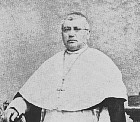
Birth. July 18, 1815, S. Biagio d’Argenta, Ferrara. His baptism name was Gaetano Giuseppe. His family moved to Bologna when he was a child.
Education. Initially, he studied at the Seminary of Acquapendente; then, he entered the Order of Preachers (Dominicans); studied at the convent of S. Maria della Quercia, Viterbo; took his religious vows in 1834; at the convent of Perugia; and at the convent of S. Maria sopra Minerva, Rome; he obtained magister in theology.
Priesthood. Ordained (no further information found). Professor of philosophy and theology in Viterbo. Professor of theology, Collegio di S. Tommaso, Rome; and Collegio della Minerva, Rome. Primo cattedratico, Collegio Casanatense, 1851-1857. Professor of theology, University of Vienna, 1857-1863.
Cardinalate. Created cardinal priest in the consistory of March 16, 1863; received red hat and the title of S. Sisto, March 19, 1863.
Episcopate. Elected archbishop of Bologna, December 21, 1863. Consecrated, January 17, 1864, patriarchal Vatican basilica, Rome, by Pope Pius IX, assisted by Gustave Adolf von Hohenlohe, titular archbishop of Edessa in Osroene, and by Francesco Marinelli, O.S.A., titular bishop of Porfireone papal sacristan. Never received the regio exequatur and had to govern the archdiocese through vicars general. Participated in the First Vatican Council, 1869-1870. Resigned pastoral government of the archdiocese of Bologna without ever having visited it, November 12, 1871. Opted for the order of cardinal bishops and the suburbicarian see of Frascati, retaining in commendam the title of S. Sisto, July 29, 1872. Prefect of the S.C. of Ecclesiastical Immunity and Jurisdictional Controversies, September 6, 1872 until his death. Resigned commendam, June 20, 1877. Participated in the conclave of 1878, which elected Pope Leo XIII.
Death. February 27, 1879, Rome. Exposed in the church of S. Maria sopra Minerva; the funeral mass was celebrated by Vincenzo Leone Sallua, O.P., titular archbishop of Calcedonia; and the absolution was given by Cardinal Camillo Di Pietro, bishop of Ostia e Velletri, dean of the Sacred College of Cardinals. Buried in the chapel of the Dominican Friars, Campo Verano cemetery, Rome.
Bibliography. "Cardinali defunti." La Gerarchia Cattolica e la Famiglia Pontificia per l'anno 1903, Città del Vaticano : Tipografia poliglotta vaticana, 1903, p. 173; Meluzzi, Luciano. I vescovi e gli arcivescovi di Bologna. Bologna : Grafica Emiliana, 1975, (Collana storico-ecclesiastica; 3), pp. 515-517; Ritzler, Remigium, and Pirminum Sefrin. Hierarchia Catholica Medii et Recentioris Aevi. Volumen VIII (1846-1903). Patavii : Typis et Sumptibus Domus Editorialis "Il Messaggero di S. Antonio" apud Basilicam S. Antonii, 1979, pp. 16-17, 45, 53 and 153; Weber, Christoph. Kardinäle und Prälaten in den letzten Jahrzehnten des Kirchenstaates : Elite-Rekrutierung, Karriere-Muster u. soziale Zusammensetzung d. kurialen Führungsschicht zur Zeit Pius' IX. (1846-1878). Stuttgart : Hiersemann, 1978. (Päpste und Papsttum; Bd. 13, I-II), II, 473, 655, 679, 684, 727, 742, 748 and 750.
Webgraphy. Biography, in Italian, diocesi di Frascati; photograph and biography, in French, Wikipédia; his engraving, Museo della Città di Bologna, Genus Bononiae Musei nella Città progetto della Fondazione Cassa di Risparmio in Bologna; his arms, engravings and photograph, Araldica Vaticana; Gli Arcivescovi di Bologna dall’anno 1731 al 1892, miabologna.it.
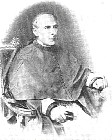
Birth. December 11, 1797, Rome. Son of Ulisse Pentini (ca.1770-1820), marquis of Cottanello (1820), consul of Sweden in Rome, and Maria Santini. Grandson, from his mother's side, of the representative of Empress Catherine II of Russia to Pope Pius VI, Gaspare Santini.
Education. His father sent him to Sweden in 1811 to avoid being sent to a French military school, as they did with the children of the nobility. Already in Sweden, he enlisted in the Swedish army. Later, he studied at Seminario Romano, Rome; and at Collegio Romano, Rome.
Early life. Lieutenant of the guard of King Charles XIII of Sweden, 1813. Member of the escort of honor of Pius VII on his return from Paris to Rome in 1814 after the fall of Emperor Napoléon I of France. Entered the ecclesiastical career.
Sacred orders. Ordained (no information found). From 1814-1820, substitute of Privy Chamberlain participantium Capaccini; and later, privy chamberlain participantium. Domestic prelate. Canon coadjutor of Canon Devoti in the patriarchal Liberian basilica, 1816. Ablegato apostolico, 1816, to bring the red biretta to new Cardinal Francisco Antonio Javier de Gardoqui Arriquíbar. Referendary of the Tribunals of the Apostolic Signature of Justice and of Grace, November 30, 1820. Canon of the chapter of the patriarchal Liberian basilica, November 30, 1820. Relator of the S.C. of Good Government, 1820-1822. Second assessor of the criminal tribunal of the Apostolic Chamber, 1823-1828. Prelate adjunct of the S.C. of the Tridentine Council, 1825-1846. Auditor of the Tribunal of the Apostolic Signature of Justice, 1828-1830. Lieutenant of the civil tribunal of the Apostolic Chamber, 1830-1835. Cleric of the Apostolic Chamber, June 12, 1837-1863; its dean, 1847-1863. President of the Archives. President of Waters and Roads, 1847. Vice-president of the Council of State, January 14, 1848. Minister of Interior, February 22, 1848. President of the Commission of revision, 1850; resigned and retired to private life.
Cardinalate. Created cardinal deacon in the consistory of March 16, 1863; received red hat and the deaconry of S. Maria in Portico Campitelli, March 19, 1863.
Death. December 17, 1869, Rome. Exposed in the church of S. Maria in Portico Campitelli, where the funeral took place with the participation of Pope Pius IX; and buried in that same church.
Bibliography. "Cardinali defunti." La Gerarchia Cattolica e la Famiglia Pontificia per l'anno 1876. Roma : Tipografia dei Fratelli Monaldi, 1875, pp. 130-131; De Camillis, Mario. "Pentini, Francesco". La Enciclopedia Cattolica, 12 vols. Città del Vaticano: Ente per l'Enciclopedia Cattolica e per il Libro Cattolico, 1949-1954, IX, col. 1160; Pentini, Francesco. Lettera di monsignor D. Francesco Pentini a S.E. il signor principe D. Marco Antonio Borghese sulla direzione delli globi areostatici sulla teoria dell'atmosfera e sue correnti non che sulla causa produttiva la direzione dell'aco magnetico in linea parallela alli poli. Roma : Nella tipografia della Rev. Cam. Apost. dai Salviucci, 1847. (Aeronautical collection, 57); Ritzler, Remigium, and Pirminum Sefrin. Hierarchia Catholica Medii et Recentioris Aevi. Volumen VIII (1846-1903). Patavii : Typis et Sumptibus Domus Editorialis "Il Messaggero di S. Antonio" apud Basilicam S. Antonii, 1979, pp. 17 and 55; Weber, Christoph. Kardinäle und Prälaten in den letzten Jahrzehnten des Kirchenstaates : Elite-Rekrutierung, Karriere-Muster u. soziale Zusammensetzung d. kurialen Führungsschicht zur Zeit Pius' IX. (1846-1878). Stuttgart : Hiersemann, 1978. (Päpste und Papsttum; Bd. 13, I-II), II, 504-505, 654, 655, 671 and 678.
Webgraphy. His engraving and biography, in French, Wikipédia; his arms, portrait and engraving, Araldica Vaticana; Rapporto di Monsignor Francesco Pentini Segretario della Congregazione del Censo presentato agli Eminentissimi e Reverendissimi Signori Cardinali componenti la detta Congregazione. Per la Congregazione Cardinalizia da tenersi in Febbrajio 1841, Google Books.
Birth. July 18, 1810, eve of the feast of Saint Vincent de Paul, Gerbéviller, Lorraine, France. Son of Antoine-Alexandre Jandel and Joséphine Chabert-Marquis. He was the eldest of three children, one boy and two girls, Victoire, who died soon after birth, and Gabrielle. He received the name John-Joseph-Alexander on his baptism. The family called him Alex.
Education. He studied with the Brothers of the Christian Schools, Nancy. Entered the Diocesan Seminary of Nancy. He concluded his studies in Switzerland, where he stayed for three years due to the 1830 Revolution in France.
Priesthood. Ordained, Saturday September 20, 1834, by Bishop Jacques-François Besson of Metz. Named professor of Holy Scriptures, and soon afterwards, rector of the seminary at Pont-à-Mousson. At this time he became acquainted with Louis-Eugène-Marie Bautain, Olympe-Philippe Gerbet, Maria Alphonse Ratisbonne, and many other distinguished men, among them Father Jean-Baptiste Henri Lacordaire. Such was the impression made on him by Lacordaire, that he began to think of entering the Dominican Order. The great preacher proposed to restore the Order in France, where it had been destroyed by the French Revolution. In 1839, he went to Rome, consulted Pope Gregory XVI on the matter, and finally received the Dominican habit on May 15, 1841. Two years later, Fathers Jandel and Lacordaire began the work of re-establishing their Order in France. Father Lacordaire was an orator; Father Jandel was a ruler of men: calm, grave, sagacious, tenacious of traditions and customs, and pre-eminently practical. Though he had not the genius of his associate, he preached with great results. It is told how a sermon at Lyon on the power of the Cross led to his being challenged by a Freemason to prove the truth of his words in the lodge; he entered it, produced his crucifix, and made the sign of the cross; instantly the lights were extinguished, the furniture was thrown about, and all but he fled in terror from the scene of confusion. Many persons in France placed themselves under his guidance. Pope Pius IX, however, called him to Rome, and made him in 1850 vicar-general of the Order ad beneplacitum, and in 1855, superior general for six years. He was soon recognized as a great religious superior and one of the most enlightened spiritual directors in the city. Of those whom he instructed at this time was Henry Edward Manning, future archbishop of Westminster and future cardinal. A born administrator, he infused new life into the Order. Several provinces were re-established, and houses opened everywhere. The Dominican nuns (second order) and tertiaries were also indebted to his zeal. He also did much to promote devotion to the rosary and to propagate the doctrine of Thomas Aquinas.
Cardinalate. Such were the services he rendered to the Holy See especially as regarded the Zouaves, that Pius IX, who was warmly attached to him, intended to make him a cardinal; but he was elected general of the order, on 7 June 1862 (1) (2). He visited Ireland twice, and only poor health prevented him from visiting America. He also paid great attention to foreign missions. During his term of office sixteen Dominicans were beatified or canonized. He presided at two chapters of the Order, and he is considered as one of its greatest superiors general.
Death. Wednesday December 11, 1872, Rome, after being in frail health for a long time. The funeral took place on December 13 in the church of S. Maria sopra Minerva; according to an old tradition, the funeral Mass, was celebrated by the Minor Observant Friars, with the Dominican Friars assisting from the choir. He was buried in the Chapel of the Order of Preachers, Campo Verano cemetery, Rome.
Bibliography. Cormier, O.P., Hyacinthe-Marie. Vie du Révérendissime Père Jandel, soixante-troisième Maître Général des Frères Prêcheurs. Paris : Librairie Ch. Poussielgue, 1896; Comier, O.P., Hyacinthe-Marie. Life of Alexandre-Vincent Jandel, O.P.: Seventy-Third Master General of the Friars Preachers. Translated by Fr. George Christian, O.P. Chicago : New Priory Press, 2015.
Webgraphy. Biography by Reginald Walsh, in English, The Catholic Encyclopedia; photograph and biography, in English, Wikipedia;
(1) “La Vita del Reverendissimo Padre Fr. Alessandro Vincenzo Jandel, LXXIII Maestro Generale dei Frati Predicatori, descritta da Fr. Giacinto Maria Cormier, Maestro in S.T. - Ex Prov. Tolosano, Socio del Reverendissimo P. Generale dello stesso Ordine e Provinciale di Terra Santa”, Tipografia Poliglotta, 1892. - p.280 : "Il Papa fu sorpreso e consolato dell’elezione. “E come, disse, quando l’ho instituito io, ci si vedeva un ostacolo all’esercizio dei poteri dell’Ordine, e ora che volevo fralo cadinale me lo prendono!”. Ma in cuor suo aveva assai piu’ piacere di vederlo a capo dell’Ordine anzi che rivestito della porpora romana.
(2) “The Dominican Revival in the Nineteenth Century”, by Fr. Raymund Devas O.P., Edition Longmans, Green and Co., 1913. - p. 105, says: The Pope had watched the restoration of the Order with the utmost satisfaction, but he had no intention of exercising his supreme authority for a third time, and the representatives of the Order were to be left free to choose their own Superior. In the probable event of their not electing Fr. Jandel, the Holy Father had determined to create him a Cardinal.| Top | Consistories | Catalogs | Home |
©1998-2021 Salvador Miranda.